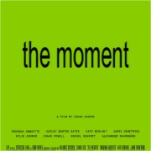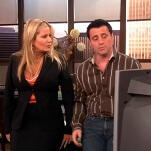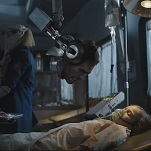Like all lazy, half-assed pop-culture historians,
I like to reduce complicated, contradictory cultural movements to cartoonish
stereotypes. So I can assure you, dear reader, that at the tail end of the
Sixties©, society had fractured into two warring camps. On one side stood, or
rather slouched, Johnny Acid Freak, who rocked out to psychedelic jams with
fuck buddy Lucy Love-In at a kaleidoscopic Be-In before heading over to the
local anarchist co-op to watch experimental 16MM film strips and drop some Blue
Sunshine while his buddies got their groove on in a three-day drum circle. On
the other side stood Sid and Suzy Squaresville, Johnny's parents. They spent their
days and nights eating TV dinners, knocking back martinis, fretting about
whether Negroes might move into their neighborhoods, and voting for Herbert
Hoover even though he died in 1964.
Yes, the times,
they were a-changing. It didn't take a weatherman to tell which way the wind
was blowing. Also, something was happening here but what it was wasn't exactly
clear. Lastly, folks met the new boss and concluded it was the same as the old
boss and many other beloved '60s clichés. After 1967's Bonnie & Clyde and especially 1969's Easy
Rider,
youth was king. But the squares weren't giving up without a fight. Old
Hollywood had no idea how to handle the seismic cultural changes of the '60s
and the ensuing youthquake, so it did what it always does when faced with a
crisis: It threw money at the problem and retreated back into the familiar and
already successful. For many studios, that meant mounting huge, bloated
productions of Broadway hits in a doomed attempt to recapture the monumental
success of 1965's The Sound Of Music.
Who needed color
television or reefer sticks and swinging chicks when they could get their kicks
watching Rex Harrison talk to animals in garish Technicolor? Or Julie Andrews
kicking up her heels as legendary vaudevillian Gertrude Lawrence? Or Lee Marvin
and Clint Eastwood singing, dancing, and prancing as weirdly homoerotic
cowpokes embroiled in a creepy ménage a trois with Jean Seberg? There
was only one problem with this strategy: These movies were, for the most part,
terrible and terribly expensive. Furthermore, audiences rejected them. They
were dinosaurs, pure and simple. Despite what Ben Stein might argue, evolution
has a funny way of killing off dinosaurs and rewarding the cunning and
adaptive.
1968's Finian's Rainbow, today's entry in My
Year Of Flops, consequently represents a strange marriage of Old Hollywood and
New. It was one of the last gasps of the crumbling studio system and the road
show, old-school mentality, yet it was directed by the nascent Godfather of New
Hollywood, Francis Ford Coppola.
Throughout the '70s, Francis Ford Coppola stood
proud and erect at the forefront of American film. He was endowed with massive
gifts as an artist and filmmaker. Masterpieces like The Godfather, The Godfather Part
II, and Apocalypse Now
throbbed with ambition and excitement. They penetrated the public consciousness
like few films before or since. What I'm trying to say, dear reader, is that
throughout the Me Decade, Coppola violated the body of American film over and
over again. But in a good way. I apologize if this paragraph offends the
sensibilities of some of our more delicate readers (I realize that a full 70
percent of our readership consists of mint-julep-sipping Southern Belles who
faint at the first hint of ribaldry) but I'm writing about a family-friendly
leprechaun musical and I've gotta get my crude double entendres in there
somewhere.
But
before Coppola was King Shit of Fuck Mountain and the charismatic alpha-male
all his peers looked up to, he was just another ambitious young director
angling for a chance to put all those countless hours of daydreaming in the
dark to good use. Like so many of his peers he'd gotten his MFA from a
respected film school (UCLA) and done the requisite apprenticeship under Roger
Corman before graduating to the big leagues with 1966's UCLA thesis film You're
A Big Boy Now. But
his experience mounting musicals was limited to directing a few during high
school.
As Coppola
tells it on Finian's Rainbow's shockingly candid audio commentary, he was
the wrong man for the job in every conceivable way. Coppola fancied himself a
New Wave-style auteur. Warner Bros saw him as a cheap gun-for-hire. Coppola
envisioned a musical filmed on location with contemporary choreography from a
hip, young renegade. Warner countered with transparently fake sets literally
leftover from Camelot and aged choreographer Hermes Pan, who was fired halfway
through filming for his old-timey, Depression-era ways. Coppola wanted to make
socially relevant, forward-thinking projects. The studio saddled him with a
1947 dinosaur with a cornball sensibility older than its 69-year-old star, Fred
Astaire.
That's the irony of Finian's Rainbow: It was ahead of its
time in 1947 and hopelessly behind the times in 1968. It was meekly asking for
a place at the table for Negroes at a time when blacks were raising their fists
and angrily demanding social, political and economic power. In 1947, film
audiences apparently weren't ready for a wealth-redistribution scheme even if
it was rooted in the sturdy foundation of leprechaun magic.
Finian's Rainbow was probably a little
too progressive and rabble-rousing for its own good. With a hero based on Woody
Guthrie, a satirical subplot in which a racist senator comes to understand the
evils of racism after he's transformed into a black man, and magically
leftylicious heroes who are all about comforting the afflicted and afflicting
the comfortable, the play is very clearly the product of a New Deal/Popular
Front mindset that envisioned a quasi-Socialist utopia without poverty or
crippling social/financial inequality. If Finian's Rainbow were a person, it'd
probably vote for Eugene V. Debs, belong to a food co-op, and recycle like a
motherfucker.
In 1947 that was
enough to get a fellow blacklisted as a Fellow Traveler at best, and a dirty,
stinking "Kumbaya"-singing Commie at worst. It doesn't seem at all coincidental
that Mr. Magoo creator
John Hubley's early attempts to adapt the musical as a feature-length cartoon
with Frank Sinatra and Louis Armstrong in key roles was squashed after the
legendary animator refused to name names before the House Un-American
Activities Committee.
[pagebreak]
History has a way of reducing the
radical to the passé. When Coppola actually sat down to read the book and
script for Finian's Rainbow—something he unwisely held off doing until after
he'd committed to the project—he was mortified by what he deemed a
"clunky old show" with an "embarrassingly old fashioned script." Coppola's
commentary for Rainbow is consequently an endless catalog of regrets, missed
opportunities and things he'd do differently if he had it all to do over again.
If you're dying to hear a great filmmaker second guess himself and every
decision he made decades earlier, I can't recommend it highly enough.
Chief among Coppola's
regrets: that he didn't drastically reduce the film's script into something
more manageable. At 145 leisurely paced minutes, Rainbow could certainly stand to
lose a good half hour. But after a leaden first hour, Coppola's unwieldy
contraption starts to pick up speed and momentum. But oh sweet Lord it takes a
while to get there.
In his first singing, dancing lead role
in over a decade, Astaire stars as an impish, whiskey-chugging Irish immigrant
who bids a hasty departure from his homeland alongside daughter Petula Clark
after stealing leprechaun Tommy Steele's pot o' gold. Rainbow is consequently the
story of a man and his dream, not unlike one of Coppola's '80s efforts, Gardens
Of Stone. Astaire's
liquor-saturated, hare-brained scheme: to plant his pot of gold in the rich
soil around Fort Knox, then sit back and reap the rewards when it brings untold
riches to the simple folk of Rainbow Valley.
Meanwhile, a
racist senator (the great character actor Keenan Wynn) is magically transformed
into a soul brother, and Steele turns up in Rainbow Valley to retrieve his pot
of gold before he turns into a mortal human being. Yes, friends, Finian's
Rainbow is
what is now known as a "docudrama." The Wynn subplot mirrors the central
premise of Melvin Van Peebles' Watermelon Man. In Watermelon Man, a bigoted white man
wakes up with black skin one morning. Hilarity is supposed to ensue but what
stands out most vividly about the film is not humor but rage.
The script for Watermelon Man originally ended with
the chastened bigot becoming white again, having learned the hard way to treat
all men as brothers and donate generously to the NAACP. Ever the provocateur,
Van Peebles gave the old middle-finger-salute to fake liberal uplift. He argued
persuasively that the original ending treated blackness as a curse and
whiteness as a reward for learning the requisite life lessons. Van Peebles
wasn't about to let the audience off the hook that easily. No, he was going to
shove the audience's collective face in the enduring ugliness of racism. There
would be no happy endings, no magical return to the status quo. Van Peebles'
Watermelon Man ends the film black and oppressed just as he began it white and
smug. There would be no catharsis for him or for the audience.
In sharp
contrast, Rainbow lets
Wynn off easy. Steele gives him an attitude adjustment to go along with his new
skin tone and it isn't long until he's praising Jesus alongside an all-black gospel
trio. His transformation rings hollow, since it's the product of magical
forces, not emotional growth. Yet if the film's social commentary is ultimately
tame and soft, I was slowly but surely won over by the film's generosity of
spirit, by its hokey but infectious populist spirit, and by Astaire's
performance.
When audiences watched Astaire in Finian's
Rainbow they
saw a beloved entertainer still agile, boyish, and charming well into his golden
years. But they also saw a terrifying vision of their own encroaching
mortality, disconcerting proof that time has its wicked way with even the
spriest and most youthful among us. In his early days, Astaire danced as if it
came as naturally to him as breathing or sleeping. Astaire effortlessly
conveyed grace and ease. Those gifts are on ample display here, but they're
joined by a newfound fragility. For the first and only time, the pleasure that
comes with watching Astaire dance is accompanied by fretful concern that if he
misjudges a step and falls down he'll break a hip and be forced to hang up his
dancing shoes for good.
On the
opposite end of the tolerability index lurks Steele. Coppola envisioned the
film's leprechaun as shy and withdrawn; Steele plays him as obnoxious and
overbearing. He's the cinematic equivalent of an Irish Spring commercial, all
oppressive whimsy and cartoon Irishness. Watching Steele mug shamelessly, I
fantasized about kicking him long and hard in the backside and watching with
glee as a gold coin magically emanated from his being with every assault, as in
video game Golden Axe. I wanted so very desperately to be a kicker of leprechauns.
Fake, phony, pandering fucking leprechauns.
I found much to like and dislike about Finian's
Rainbow, from
forest sets that look unmistakably like an Astroturf showroom to a bloated
running time made even longer by a musical prelude and intermission. But I
can't help but wonder if my grudging fondness for the film was a form of
Stockholm Syndrome: Since I spend something like 15-25 hours researching,
watching, and writing about My Year Of Flops entries, it's in my best interest
to lay back and try to enjoy them as much as humanly possible.
I was rooting unashamedly for the
avuncular old pro and the whiz kid to beat the odds, to transform hokey old
material into something fresh and relevant. So I was willing to overlook many
of the film's flaws in light of its underdog charm and gentle humanism. There
is a certain glory in its failure. It's a relic of a very strange period in
Hollywood's rocky evolution, and it ranks somewhere between a footnote and a
lost gem in Coppola's wildly uneven filmography. It's both fascinating and
frustrating watching Coppola—who admits in the commentary that he didn't
meet a black person until he was 22—try to reconcile the yawning gulf
between the racial and social attitudes of 1947 and 1967.
Rainbow is almost worth checking
out for its commentary alone and the way Coppola spends part of the time
mapping out the ballsy, contemporary, much, much shorter film he should have
made and the rest of it bemoaning the imperfect charmer he did make. I am
probably alone in hoping that Coppola someday gets to re-edit the film however
he sees fit. Heck, if George Lucas can toy with the Star Wars universe to his heart's
content then Coppola—who met Lucas on the film's set—should be
allowed to make a director's cut of Finian's Rainbow, though I agree with all
those Internet nerds that in the radically shortened Finian's Rainbow:
Special Edition Han
should still shoot Greedo first.
Failure,
Fiasco or Secret Success: Somewhere between a Fiasco and a very soft Secret
Success







































